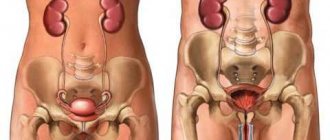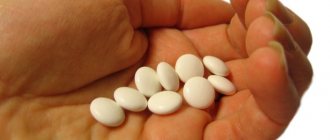Diuretics used for diabetes mellitus are characterized as one of the most effective antihypertensive drugs. But it should be remembered that in case of hypertension, which is accompanied by diabetes mellitus, one must take such drugs with extreme caution and use them only under the supervision of a doctor. Diuretics correct renal function and affect the rate of urine excretion.
general information
Diuretic diuretics are prescribed during the treatment of hypertension in diabetes mellitus, with the development of liver cirrhosis and heart failure. The selection of diuretics for treatment should be selected by the doctor individually. For hypertension, diuretics of the thiazide group are prescribed. They activate the removal of sodium from the body, but at the same time increase triglycerides, glucose and cholesterol. A high dose aggravates this process and causes danger to the body. It is imperative to control sugar levels when treating the disease with diuretics.
Reasons for using diuretics
The doctor prescribes diuretics for the following diagnoses:
- high blood pressure (hypertension, hypertension);
- renal dysfunction;
- ascites;
- renal failure;
- osteoporosis;
- Liddle's syndrome;
- glaucoma;
- cardiac edema;
- cirrhosis.
In case of renal dysfunction, loop diuretics are taken, which affect the kidneys. For arterial hypertension, thiazide diuretics do not pose a danger to the body and reduce the risk of stroke.
High doses can provoke the development of hypokalemia, so you need to use them carefully and only on the recommendation of a doctor, strictly adhering to his instructions.
Contraindications
Diuretics will be more harmful when treating type 1 and type 2 diabetes in the following cases:
- diseases of the urinary system;
- nephropathy;
- cirrhosis of the liver;
- individual intolerance to the constituent components;
- pathological changes in lung tissue;
- liver failure;
- hepatitis of non-viral etiology;
- heart disease (congenital and acquired defects);
- pregnancy and lactation.
Therapy with diuretics is an important part in the treatment of diabetes, but due to the significant list of contraindications, it is selected with extreme caution.
Hypertension in diabetes mellitus
When diagnosed with diabetes mellitus, the causes of hypertension can be different. It usually occurs with metabolic syndrome, which occurs before the onset of type 2 diabetes. Sometimes the doctor cannot find the root cause of high blood pressure. The reasons that provoked hypertension may be:
- magnesium deficiency;
- constant stress and emotional stress;
- poisoning or intoxication of the body caused by the influence of mercury, cadmium or lead;
- atherosclerosis of arteries.
Kidney damage provokes hypertension due to poor excretion of sodium from the patient's body. A dangerous vicious circle is formed: weak kidney functions are compensated by increased blood pressure, which increases in the renal glomeruli. This causes the death of the glomeruli due to prolonged increased pressure. Kidney failure occurs. If treatment is started at an early stage of diabetic nephrosis, the disease is treatable. The main task will be to reduce blood sugar levels to an acceptable level.
Types of diuretics
Pay attention to the list of permitted foods and menus that lower blood glucose levels.
Each disease requires treatment with a specific drug that acts directly on the cause of the disease. Diuretic medications have different mechanisms of action. According to this classification, each diuretic belongs to a specific group:
- medications that affect the functioning of the renal tubules, these include: Chlorthalidone, Clopamide, Cyclomethiazide;
- diuretics that have an osmotic effect (for example, Monitol);
- potassium-sparing diuretics: Veroshpiron.
Also, all diuretics are divided into groups according to the effectiveness of sodium removal:
- those with high efficiency remove 15% or more;
- with average efficiency they remove 5−10%;
- ineffective ones remove 5% or less from the body.
Each diuretic has its own specific purpose. Diuretics, which are weakly effective, support the body in combination with other drugs. In studies, it was found that the higher the level of protein in the urine, the higher the pressure will be in hypertension. Highly effective drugs are usually used if necessary for a short period.
Groups of diuretics
Diuretics are divided into groups according to the mechanism of their effect on the body:
- Loop - effectively remove excess fluid in a short time. These include: “Furosemide”, “Ethacrynic acid” and others.
- Thiazide diuretics are often used for diabetes and are considered one of the most effective drugs. Quickly reduce blood pressure and help relieve swelling. These include: “Hypothiazide”, “Indapamide”, “Dichlorothiazide”.
- Osmotic diuretics - remove fluid in a very short time. Used in emergency situations. Prohibited for long-term use. These include: “Urea”, “Mannitol”, “Potassium Acetate”.
- Potassium-sparing diuretics prevent damage to the electrolyte balance and promote the excretion of potassium and sodium from the body. These include: Triamterene, Spironolactone.
Negative side effects are caused by taking diuretics in the treatment of diabetes mellitus for a long time. Therefore, in order to use the drug correctly with maximum effectiveness, it must be prescribed by a doctor after all the necessary tests and examinations. Self-medication can lead to a severe form of the disease, so doing it is strictly prohibited.
Drug Dibikor
Dibikor is a new drug for improving tissue metabolism, which also has a diuretic effect. One tablet of the product contains:
- taurine;
- microcrystalline cellulose;
- starch;
- additional substances.
The instructions for use indicate that with long-term use, a diabetic notes a significant improvement in his general condition, his blood circulation in the visual organs quickly normalizes.
Dibicor in small doses will help minimize the negative effects that develop during the use of other drugs to block calcium channels. In addition, there is a decrease in the sensitivity of the liver to antifungal agents.
For diabetics, there is another advantage of using Dibikor - in increased dosages, it reduces the concentration of glucose in the blood within 14 days.
Dibicor should be taken orally with a sufficient amount of warm, still water. The exact dosage directly depends on:
- type of diabetes;
- the degree of its severity.
If a person has a history of heart disease or heart failure, it is recommended to take 250-500 mg of the active substance per day 15 minutes before meals. Duration of treatment – 1 month. If necessary, the dosage is adjusted. Sometimes diabetes mellitus is treated with Dibikor for 1.5 months.
For type 2 diabetes, Dibikor is taken in a dosage of 500 mg twice a day; it can remove excess fluid from the body only if used together with hypoglycemic agents.
When moderate hypercholesterolemia occurs, it is quite enough to take only one dose of medication to reduce blood sugar concentrations. Numerous patient reviews confirm the positive effects of the tablets already in the second or third week of the course.
The pharmaceutical market can offer several analogues of Dibikor, including herbal products. The price of analogues may vary depending on the manufacturer, the concentration of taurine, and other substances.
The most popular analogues of the drug:
- Mildrazine;
- Kapikor;
- Taufon;
- Mildronate. Mildronate is mainly used for type 2 diabetes mellitus.
Natural analogues of this diuretic drug include tincture of hawthorn flowers and leaves.
What diuretics should be used for diabetes?
This diuretic is widely used in the treatment of diabetes mellitus, which belongs to the thiazide or thiaz-like group. Diuretics that belong to the thiazide class (“Dichlorothiazide”, “Poitiazide”) and are taken for hypertension with type 1 diabetes mellitus are most effective in small doses. Indapamide is considered one of the most effective drugs. It has average effectiveness, but the main properties noted by doctors are the lack of effect on fats and carbohydrates.
Typically, diuretics are used in combination with other medications.
A diuretic such as Hypothiazide is often used in the complex treatment of diabetes mellitus and blood pressure. One of the negative characteristics is the properties of the drug that affect the metabolism of glucose and cholesterol. Uncontrolled treatment causes atherosclerosis and aggravates the underlying disease. The diuretic “Hydrochlordiazide” has similar actions to “Hypothiazide”.
Taking diuretics for type 2 diabetes
Diuretics for type 2 diabetes are not recommended for use in large quantities. Diuretics, which belong to the thiazide group, have properties that disrupt insulin production and increase glucose levels. Taking this drug on your own is strictly prohibited. An osmotic diuretic can provoke a pathology such as hyperosmolar coma if used uncontrolled.
A diuretic drug for diabetes mellitus belonging to the potassium-sparing or loop group is not recommended. The exception is a one-time use for immediate action in emergency situations. In case of hypertension, which is accompanied by type 2 diabetes mellitus, diuretic medications are used with caution.
Contraindications
Diuretics will be more harmful when treating type 1 and type 2 diabetes in the following cases:
- diseases of the urinary system,
- nephropathy,
- cirrhosis of the liver,
- individual intolerance to the constituent components,
- pathological changes in lung tissue,
- liver failure,
- hepatitis of non-viral etiology,
- heart disease (congenital and acquired defects),
- pregnancy and lactation.
Therapy with diuretics is an important part in the treatment of diabetes, but due to the significant list of contraindications, it is selected with extreme caution.
Concomitantly prescribed diuretics for diabetics
Diuretics for diabetes mellitus are prescribed along with other medications that must be taken to eliminate the risk of negative consequences of treatment. All diuretics remove potassium from the body to a greater or lesser extent. Lack of potassium leads to irreversible consequences. Therefore, in parallel with taking diuretics, potassium-sparing diuretics are taken. These include the drug Spironolactone. The components of its composition prevent the leaching of potassium. The doctor prescribes this medication without fail during the treatment of arterial hypertension and diabetes mellitus.
Additional medications
The described diuretics for diabetes mellitus have the ability to flush potassium from the body. To prevent the development of complications caused by a lack of this electrolyte, potassium-sparing diuretics must be used in parallel.
Spironolactone (Veroshpiron) remains the most popular and widespread. It has a relatively mild diuretic effect, but prevents the loss of an important trace element. It is part of mandatory medications for the treatment of arterial hypertension and diabetes.
Tablets of the drug contain 25 or 100 mg of the active substance. The usual daily dose is 50-100 mg depending on blood pressure. The course of therapy is at least 2 weeks.











